I love celebrating The Feast of the Epiphany. I like how it is "transferred" to the closest Sunday before January 6 even though the actual date for the feast is January 6. On the Sunday following January 6 we celebrate the Baptism of Our Lord.
But what all of this means to me is that I can sort of dwell
in the Feast of the Epiphany for a number of days! It must have taken a number of days for the magi to reach the Christ child. Imagine the anticipation during their journey and the wonder-filled joy at journey's destination. I am finding some great posts about the magi and the Feast of the Epiphany. I wanted to record
(@ least part of ) them here in my Catholic Notebook. I hope you will enjoy reading these snippets of wisdom, too.
from
A Concord Pastor Comments
And having been warned in a dream not to return to Herod,
they departed for their country by another way.
Perhaps the most important part of this story for us is:
 not the star
not the star
not the prophet’s words
not the audience with King Herod
not the visit to the Christ Child
not the gifts…
but perhaps, for us,
the most important part of the story of the Magi
is how they went home…
They went home by another way…
In the grand revelation
of God’s love made manifest to us in Christ,
this story of the Magi is meant to remind us
that Christ came not only for the chosen people of Israel
but for us, too -Gentiles-
represented by the mysterious visitors from the East.
And there’s something to be learned
from how their pilgrimage and meeting with Christ
served to re-orient them: how they
went home by another way.
Simply having met Jesus made them marked men in Herod’s court.

They had met the “newborn King of the Jews”
and that encounter was a threat to those in power.
Because they had met Jesus,
the Magi were no longer welcome or safe in Herod’s palace.
(Painting to the right is a Rembrandt)
Because they had met Jesus,
their journey home had to be re-routed.
Because they had met Jesus,
their old maps would no longer be enough.
They were beginning a journey that would take them
on a path that was new to them,
a path they’d not walked before.
And therein might lie the importance of this story for us.
Are we not those who have met Jesus?
Would we be here today if we
hadn’t already met Jesus?
But if we’
ve met the Lord -
has that encounter re-routed our lives’ journeys?
Whose star do we follow?
What prophet’s words shape our thoughts, influence our choices?
What gifts do we work for?
To whom do we offer them - and why?
Has our encounter with Christ
made us more welcome or unwelcome in places of power?
Has our having met Christ “marked” us
as men and women whose path leads them
by another way - by a way that many will not walk?
And having been warned in a dream not to return to Herod,
they departed for their country by another way.
It’s important to see that the Magi
did go home.
They were not asked to
leave their home but rather, to approach the familiar from a new, a different perspective.
(Painting to left is by Leonard da Vinci)
Does our knowing Christ re-orient us
and how we approach the familiar ups and downs of our lives?
Did our recent celebration of Christmas,
re-chart the journey we’re on?
Or are we already back in Herod’s court,
our encounter with Christ tucked away for another year
with the Christmas lights and decorations?
What we celebrate in the Christmas mystery
is how
God remapped
divinity and visited
us in Jesus
- and then,
went home by another way,
went home by way of human suffering and death,
went home to prepare a place for us in heaven
even as Christ prepares a place for us at this table
where we remember the path home he walked to the Cross,
in whose shadow we pray.
May the Eucharist we receive, wherein we meet Christ Jesus,
strengthen each and all of us,
to go home by another way…
from
The Deacon's Bench
The story of the magi is one of the more mysterious in the New Testament. The gospel doesn't tell us how many of them there were; one early Christian tradition actually told of 12 astronomers making their way to Judea, presumably paralleling the 12 tribes of Israel and, of course, the 12 apostles. But somehow - probably because of the number of gifts mentioned - the number over the centuries dwindled to three. Matthew's gospel is the only one that even mentions them. We really don't know much more about them, except that they were searching for Jesus.
As I told my wife the other day: their visit to Herod is the last time in recorded history that a group of men stopped somewhere to ask directions.
But there is something about their journey that is both poignant, and profound. Among other things, the travels of the magi teach us the value of trust. They trusted in power from above to pierce the night and point the way. Their story also tells us that even the wisest of men need help to find their way.
It's significant, I think, that the magi traveled as a group - because no one makes a journey of faith alone. As a church, we are a community: a body of people looking out for one another, supporting one another. We are all traveling, somehow, in the same direction. And when we can, we also help one another to read the skies, and follow the way to the light.
So it was with the magi.
(Painting above is a Durer)
@ About Catholicism
Prayers:
Collect for the Feast of the Epiphany of Our Lord Jesus Christ (from the Mass of St. Pius V):
O God, Who by the guidance of a star didst this day reveal Thine only-begotten Son to the Gentiles, mercifully grant that we, who know Thee now by faith, may be so led as to behold with our eyes the beauty of Thy majesty. Through the same Lord Jesus Christ, Thy Son, Who liveth and reigneth with Thee in the unity of the Holy Ghost, God, world without end. Amen.
History:
The Feast of the Epiphany of Our Lord Jesus Christ is one of the oldest Christian feasts, though, throughout the centuries, it has celebrated a variety of things.
Epiphany comes from a Greek verb meaning "to reveal," and all of the various events celebrated by the Feast of the Epiphany are revelations of Christ to man. Like many of the most ancient Christian feasts, Epiphany was first celebrated in the East, where it has been held from the beginning almost universally on January 6. Today, among both Eastern Catholics and Eastern Orthodox, the feast is known as Theophany—the revelation of God to man.
Epiphany originally celebrated four different events, in the following order of importance:
- the Baptism of Christ
- Christ's first miracle, the changing of water into wine at the wedding in Cana
- the Nativity of Christ and
- the visitation of the Wise Men or Magi
Each of these is a revelation of God to man:
- @ Christ's Baptism, the Holy Spirit descends and the voice of God the Father is heard, declaring that Jesus is His Son
- @ the wedding in Cana, the miracle reveals Christ's divinity
- @ the Nativity, the angels bear witness to Christ, and the shepherds, representing the people of Israel, bow down before Him
- @ the visitation of the Magi, Christ's divinity is revealed to the Gentiles—the other nations of the earth.
Eventually, the celebration of the Nativity was separated out, in the West, into Christmas; and shortly thereafter, Western Christians adopted the Eastern feast of the Epiphany, still celebrating the Baptism, the first miracle, and the visit from the Wise Men. Thus, Epiphany came to mark the end of Christmastide—the twelve days of Christmas, which began with the revelation of Christ to Israel in His Birth and ended with the revelation of Christ to the Gentiles at Epiphany.

Over the centuries, the various celebrations were further separated in the West, and now the Baptism of the Lord is celebrated on the Sunday after January 6, and the wedding at Cana is commemorated on the Sunday after the Baptism of the Lord.
(painting to right is a Botticelli)
In many parts of Europe, the celebration of Epiphany is at least as important as the celebration of Christmas. In Italy and other Mediterranean countries, Christians exchange gifts on Epiphany—the day on which the Wise Men brought their gifts to the Christ Child—while in Northern Europe, it's not unusual to give gifts on both Christmas and Epiphany (often with smaller gifts on each of the twelve days of Christmas in between).
@
Canterbury Tales
According to legend, the bodies of Gaspar, Balthasar, and Melchior (the traditional names of the Wise Men) were discovered by Saint Helena during her pilgrimage to the Holy Land. The fourteenth century account by John of Hildesheim entitled
History of the Three Kings explains how Queen Saint Helen brought the mummies of the Magi to Constantinople.
After she had found the bodies of Melchior, Balthazar, and Gaspar, Queen Helen put them into one chest and ornamented it with great riches, and she brought them into Constantinople.
Later, the three mummies were transferred from Constantinople to Milan. The city of Milan was once known for its festive observance of the feast of Epiphany, and the presence of the three Wise Men's relics in that city may be the context and origin for this ancient custom. The Holy Roman Emperor Frederick moved the mummified Magi one last time to Cologne in AD 1164 where they rest till this day. If you get to Germany, be sure to check it out.
 Photo of the golden casket of the three Wise Men
Photo of the golden casket of the three Wise Men
Are the bones of three Wise Men really in Germany? God only knows...but I like to think so. And remember: Wise Men still seek Jesus.












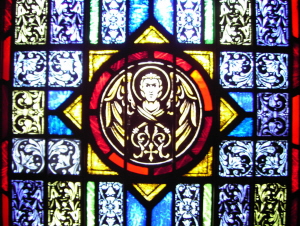
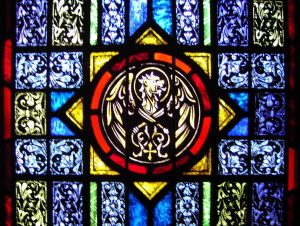
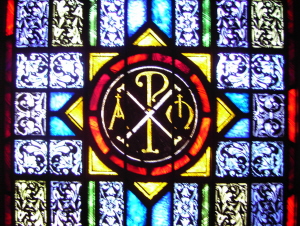
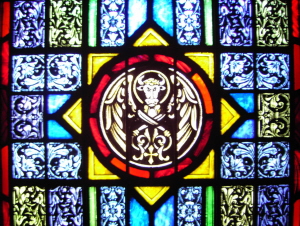
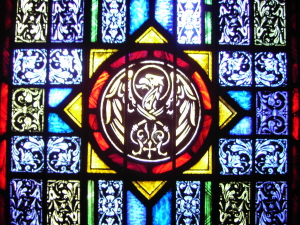
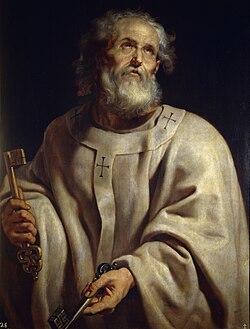














 Sister of St. Lazarus and St. Martha, she is called "the Penitent". St. Mary was given the name 'Magdalene' because, though a Jewish girl, she lived in a Gentile town called Magdale, in northern Galilee, and her culture and manners were those of a Gentile. St. Luke records that she was a notorious sinner, and had seven devils removed from her.
Sister of St. Lazarus and St. Martha, she is called "the Penitent". St. Mary was given the name 'Magdalene' because, though a Jewish girl, she lived in a Gentile town called Magdale, in northern Galilee, and her culture and manners were those of a Gentile. St. Luke records that she was a notorious sinner, and had seven devils removed from her.




